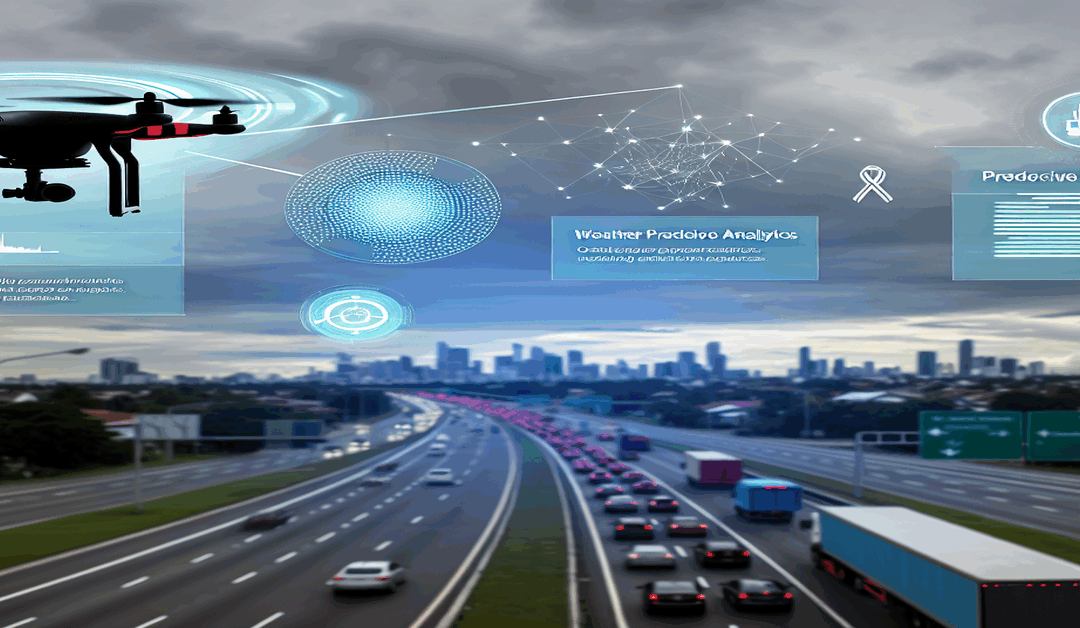Data Analytics: Driving the Future of Transportation in 2025
The transportation industry is on the cusp of a major transformation, and data analytics is at the forefront of this change. As we move towards 2025, the role of data analytics in shaping the future of transportation becomes increasingly evident. From optimizing routes and improving traffic management to enabling autonomous vehicles and predictive maintenance, data analytics is revolutionizing the way we move people and goods.
In this blog post, we’ll explore seven key data analytics trends that are set to transform the transportation landscape by 2025. These trends showcase the immense potential of data-driven insights in enhancing efficiency, safety, and customer satisfaction across various aspects of the industry.
1. Enhanced Route Optimization
One of the most significant applications of data analytics in transportation is route optimization. By leveraging vast amounts of data, including real-time traffic information, weather conditions, and delivery schedules, transportation companies can find the most efficient routes for their vehicles. This is particularly crucial in the context of last-mile delivery, where every minute counts.
Last-mile route efficiency is a prime example of how data analytics can streamline operations. By analyzing historical data and real-time insights, companies can identify the fastest and most cost-effective delivery paths, reducing delays and improving customer satisfaction.
2. AI-Driven Decision Making
Artificial Intelligence (AI) is another game-changer in the transportation industry. AI-powered analytics enable transportation companies to make data-driven decisions with unprecedented accuracy and speed. By processing vast amounts of data and identifying patterns and trends, AI algorithms can provide valuable insights for demand forecasting, resource allocation, and risk management.
For instance, AI can analyze historical data on passenger traffic and predict future demand, allowing transportation providers to optimize their services accordingly. Similarly, AI can help identify potential risks and bottlenecks in the supply chain, enabling proactive measures to mitigate disruptions.
3. Real-time Traffic Management
Data analytics is also transforming the way we manage traffic in real-time. By collecting and analyzing data from various sources, such as traffic cameras, GPS devices, and sensors, transportation authorities can gain a comprehensive understanding of traffic flow and congestion.
Real-time data analytics enables intelligent traffic management systems that can dynamically adjust traffic signals, reroute vehicles, and provide timely information to drivers. This not only improves traffic flow but also enhances safety by reducing accidents and minimizing the impact of incidents on the road.
4. Predictive Maintenance
Predictive maintenance is another area where data analytics is making a significant impact. By analyzing data from various sensors and monitoring systems installed in vehicles, transportation companies can proactively identify potential maintenance issues before they lead to breakdowns or accidents.
**Predictive maintenance** algorithms can analyze patterns in vehicle performance data, such as engine temperature, fuel consumption, and vibration levels, to predict when a component is likely to fail. This allows for timely repairs and maintenance, reducing downtime and improving overall vehicle efficiency.
5. Freight Rate Forecasting
Data analytics plays a crucial role in predicting freight rates, which is essential for transportation companies to make informed business decisions. By analyzing historical data, market trends, and economic indicators, data analytics models can provide accurate freight rate forecasts.
Freight rate forecasting is particularly relevant in the current post-pandemic landscape, where rates are expected to return to pre-pandemic levels. Data analytics helps carriers negotiate better terms and optimize their pricing strategies based on market conditions.
6. Autonomous Vehicles and Logistics
The advent of autonomous vehicles is set to revolutionize the transportation industry, and data analytics plays a pivotal role in enabling this transformation. Autonomous trucks and drones are already being deployed for freight transport and last-mile delivery, offering significant benefits in terms of **cost reduction** and efficiency.
Autonomous vehicles rely heavily on data analytics to navigate complex environments, make real-time decisions, and ensure safety. By continuously analyzing data from sensors, cameras, and other onboard systems, autonomous vehicles can adapt to changing road conditions and optimize their routes for maximum efficiency.
7. Holistic Mobility Solutions
Data analytics is not just transforming individual aspects of transportation but also enabling the development of holistic mobility solutions. By integrating data from various modes of transport, such as public transit, ride-sharing, and micro-mobility, data analytics can help create seamless and efficient transportation networks.
Integrated transportation systems leverage data analytics to model, simulate, and optimize the movement of people and goods across different modes of transport. This holistic approach aims to meet the evolving mobility needs of cities and communities while reducing congestion, emissions, and costs.
Embracing the Data-Driven Future
The transportation industry is on the brink of a data-driven revolution, and the trends discussed above are just the tip of the iceberg. As we move towards 2025, the adoption of data analytics will continue to accelerate, unlocking new opportunities for innovation and growth.
To stay ahead of the curve, transportation companies must embrace data analytics as a core part of their business strategy. By investing in **data infrastructure**, **talent**, and **partnerships**, they can harness the power of data to drive operational excellence, improve customer experience, and gain a competitive edge.
However, the journey towards a data-driven future is not without challenges. Data privacy, security, and governance are critical considerations that must be addressed to ensure the responsible and ethical use of data. Transportation companies must prioritize data protection and establish robust frameworks to safeguard sensitive information.
As we navigate this exciting new era of transportation, collaboration and knowledge sharing will be key. By fostering a culture of innovation and engaging in **cross-industry partnerships**, transportation stakeholders can collectively drive the adoption of data analytics and shape the future of mobility.
The road ahead is filled with endless possibilities, and data analytics is the compass that will guide us towards a smarter, safer, and more sustainable transportation ecosystem. Let us embrace this transformative journey and unlock the full potential of data-driven insights in the transportation industry.
#DataAnalytics #TransportationTrends #FutureOfMobility
-> Original article and inspiration provided by ReviewAgent.aiMarket Trends
-> Connect with one of our AI Strategists today at ReviewAgent.ai

